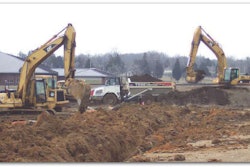A new report finds that Rhode Island faces a $4.5 billion transportation funding shortfall over the next 10 years. This is at a time when nearly a quarter of state-maintained roads are in need of repair, nearly half of Rhode Island’s bridges are structurally deficient or functionally obsolete, congestion is increasing and the rural traffic fatality rate is more than three times higher than on all other roads in the state.
The report, released Oct. 7 by TRIP, a Washington, D.C.-based national transportation organization, finds that roadways that lack some desirable safety features, have inadequate capacity to meet travel demands or have poor pavement conditions cost the state’s motorists nearly $1 billion annually and the average Providence area motorist pays $1,298 each year.
The report, “Future Mobility in Rhode Island: Meeting the State’s Needs for Safe and Efficient Mobility,” finds that a total of 24 percent of the state-maintained roads are in poor or mediocre condition, and that pavement conditions will deteriorate in the future under current funding levels.
In addition to deteriorated road conditions, 21 percent of Rhode Island’s bridges are structurally deficient and an additional 27 percent are functionally obsolete. These bridges are inspected regularly and are safe for travel, but many are in need of rehabilitation.
The state’s roads are also becoming increasingly crowded, as commuting and commerce are constrained by growing traffic congestion on Rhode Island’ major urban roads. In 2008, 37 percent of the state’s urban highways were congested during peak travel times.
Rhode Island’s rural, non-Interstate roads have a traffic fatality rate that is more than triple that of all other roads in the state. Increased investment in the state’s transportation infrastructure could improve road and bridge conditions, ease congestion, enhance safety and support long-term economic growth.
“Rhode Island’s transportation system faces many challenges, including growing traffic volumes, harsh weather and even impacts from natural disasters such as the floods we experienced this March,” said Rhode Island Department of Transportation Director Michael P. Lewis. “Economic support, such as the State bonds and Federal stimulus, enable the Department to continually reinvest in our vital infrastructure network of roads, bridges, rail and bike paths.”
TRIP estimates that Rhode Island’s roadways that lack some desirable safety features, have inadequate capacity to meet travel demands or have poor pavement conditions cost the state’s drivers approximately $978 million annually in the form of traffic crashes, additional vehicle operating costs and congestion-related delays. TRIP calculates that in the Providence metro area this cost is $1,298 per motorist each year. A breakdown of these costs can be found in the TRIP report.
The TRIP report contains lists of needed transportation projects throughout the state that would repair and replace deficient bridges and increase roadway capacity.
However, these projects won’t move forward without additional transportation funding, TRIP says.
Last year’s federal American Recovery and Reinvestment Act (ARRA) provided about $137.1 million in stimulus funding for highway and bridge improvements and $29.6 million for public transit improvements in Rhode Island, according to TRIP.
This funding has served as an important down payment on needed road, highway, bridge and transit improvements but is not sufficient to allow the state to proceed with numerous projects needed to modernize its surface transportation system. The federal surface transportation program, which expires on December 31, 2010, remains a critical source of funding for road and bridge repairs and transit improvements in Rhode Island.
With unemployment in Rhode Island more than doubling from 5.4 percent in August 2007 to 11.8 percent in August 2010, making needed improvements to the state’s roads, highways, bridges and transit could provide a significant boost to the state’s economy by creating jobs and stimulating long-term economic growth as a result of enhanced mobility and access.
“While the state has put a combination of federal and state funds to good use in the past, in the coming years, many additional needed projects will remain stranded on the drawing board because of insufficient funding,” Will Wilkins, executive director of TRIP, said in a written statement from the organization. “It is critical that Rhode Island adequately fund its transportation system and that Congress produces a timely and adequately funded federal surface transportation program. Thousands of jobs and the state’s economy are riding on it.”











